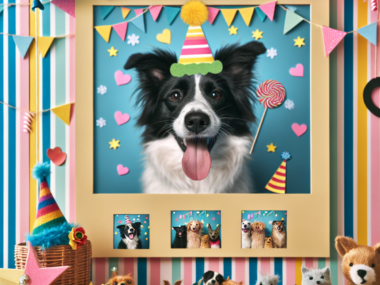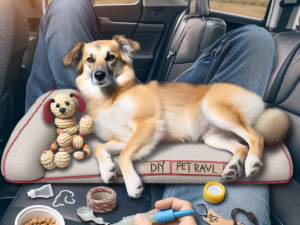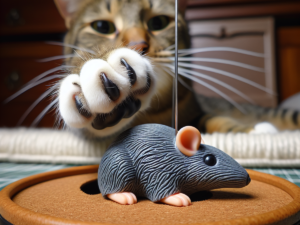Creating a DIY Pet First Aid Kit: The Ultimate Guide with Essential Items and Tips
Introduction
A DIY pet first aid kit is a crucial resource for every pet owner. It provides the necessary tools and supplies to administer immediate care to your furry friend in case of an emergency. In this article, you will discover the essential items required for a comprehensive DIY pet first aid kit, along with valuable tips for customization and maintenance.
As a responsible pet owner, having a well-equipped first aid kit can make a significant difference in ensuring the well-being of your pet during unexpected situations. This guide aims to empower you with the knowledge to assemble a personalized first aid kit tailored to your pet’s specific needs. Whether it’s addressing minor injuries, managing medical conditions, or handling unforeseen emergencies, a DIY pet first aid kit is an indispensable asset that every pet owner should prioritize.
1. Essential Items for a DIY Pet First Aid Kit
When putting together a DIY pet first aid kit, make sure to include these important items that can help with common pet injuries and emergencies:
- Absorbent gauze pads and adhesive tape: These are necessary for dressing wounds and covering any cuts or injuries.
- Cotton balls or swabs: Useful for cleaning wounds or applying medication to affected areas.
- 3% hydrogen peroxide: It’s important to note that this should only be used with veterinary or animal poison control advice as it can be used to induce vomiting in case of poisoning.
- Ice pack: An ice pack can help reduce swelling or relieve pain in case of injuries or inflammation.
- Disposable gloves: Always have disposable gloves on hand to protect yourself from contamination when taking care of your pet’s injuries.
Including these essential items in your DIY pet first aid kit will help you handle common pet injuries and emergencies more effectively. Remember to check and replace these items as needed so your pet first aid kit is always ready to use.
2. Tools and Medications
In this section, we will discuss the essential tools and medications to include in your DIY pet first aid kit. These items are crucial for administering immediate care and providing basic medical assistance to your furry friend in case of an emergency.
- Blunt-end scissors and tweezers: These tools are essential for removing foreign objects such as splinters, thorns, or debris from your pet’s skin or paws. Blunt-end scissors are safer to use than sharp ones, reducing the risk of accidentally cutting your pet. Tweezers can be used to carefully extract ticks or remove small objects stuck in their fur.
- OTC antibiotic ointment: Including an over-the-counter antibiotic ointment in your kit is vital for preventing infection in minor wounds or cuts. When applied topically, it creates a protective barrier against bacteria, reducing the risk of complications.
- Oral syringe/turkey baster: An oral syringe or turkey baster is useful for administering oral medications to your pet, especially if they refuse to take pills voluntarily. It can also be used for flushing wounds with a saline solution or water to clean and disinfect them effectively.
- Liquid dishwashing detergent: While not a medication, liquid dishwashing detergent can come in handy if you need to bathe your pet to remove any toxic substances or chemicals from their fur. It’s important to choose a mild and gentle detergent that won’t irritate their skin.
- Towels: Keeping a few clean towels in your first aid kit is always a good idea. They can be used for various purposes like cleaning wounds, drying off your pet after bathing, or providing warmth and comfort during emergencies.
Including these essential tools and medications in your DIY pet first aid kit will ensure that you are prepared to handle common medical situations that may arise. Remember to regularly check and replace expired medications, and consult with your veterinarian for specific recommendations based on your pet’s needs.
3. Additional Supplies for Pet First Aid Emergencies
When assembling a DIY pet first aid kit, it’s crucial to include additional supplies that can be invaluable during emergencies. These items go beyond the basic essentials and cater to specific situations that may arise.
Liquid Dishwashing Detergent
Liquid dishwashing detergent serves a dual purpose in a pet first aid kit. Not only is it useful for bathing your pet if necessary, but it can also be used to clean wounds or remove harmful substances from their fur.
Towels
Towels are versatile and essential for various purposes in pet first aid situations. They can be used for drying your pet after cleaning or bathing, creating a clean surface for treatments, or providing comfort and warmth during emergencies.
Small Flashlight
A small flashlight is an indispensable tool for inspecting wounds or foreign objects in your pet’s fur or skin. It enables you to assess injuries more effectively and identify any potential hazards that may require immediate attention.
Alcohol Wipes
Alcohol wipes are essential for disinfection purposes when addressing minor injuries or wounds. They help prevent infection and ensure proper hygiene when tending to your pet’s medical needs.
Styptic Powder
Accidents such as minor cuts or nail trimming incidents can lead to bleeding in pets. Including styptic powder in your first aid kit enables you to quickly stop bleeding, providing immediate relief and preventing further complications.
4. Eye Care and Other Considerations
In addition to the essential items for a DIY pet first aid kit, there are specific items that are important for eye care and other considerations. Here are some key points to keep in mind:
- Saline eye solution: This is a gentle solution that can be used to flush out debris or irritants from your pet’s eyes. It helps to clean and soothe the eyes, providing relief from discomfort. In case of an eye injury or irritation, saline eye solution can be used to rinse the affected eye.
- Artificial tear gel: This gel helps to lubricate your pet’s eyes, providing relief from dryness or irritation. It can be especially useful for pets with chronic dry eyes or those who are prone to eye infections. Apply a small amount of the gel directly onto your pet’s eyes as directed by your veterinarian.
Including these items in your DIY pet first aid kit ensures that you are prepared to address common eye-related issues that may arise with your pet. However, it is important to note that serious eye injuries or infections should always be evaluated by a veterinarian.
Other Considerations
In addition to eye care, there are a few other considerations to keep in mind when assembling your DIY pet first aid kit:
- Documentation: It is crucial to include important documentation in your kit, such as vaccination records, medical history, and emergency contact information for your veterinarian. This information will be invaluable in case of an emergency or if you need to seek professional veterinary care.
- Bottled water: Having bottled water on hand can be useful for cleaning wounds or providing hydration during emergencies when clean water may not be readily available.
By including these items in your DIY pet first aid kit, you can better address eye-related issues and be prepared for various emergencies that may arise with your pet. Remember to regularly check and replace any expired items in your kit to ensure its effectiveness.
5. Documentation, Additional Items, and Maintenance Tips
The documentation and additional items in a pet first aid kit are essential for providing comprehensive care to your pet in emergency situations. Additionally, regular maintenance is crucial to ensure the effectiveness of the kit when needed.
6. Emergency First-Aid Manual
Including an emergency first-aid manual provides a comprehensive reference guide for administering first aid to your pet. It offers detailed instructions on handling various medical scenarios, making it an indispensable resource for pet owners.
7. Bottled Water and Wet Wipes
Bottled water and wet wipes are valuable for cleaning purposes. In emergency situations, these items can be used to clean wounds or remove dirt from your pet’s fur, ensuring proper hygiene during first aid administration.
8. Cold Packs
Cold packs play a crucial role in reducing swelling or pain in case of injuries or mishaps. They provide immediate relief and aid in managing discomfort for your pet while awaiting professional veterinary care.
9. First Aid Guide
A first aid guide serves as a quick reference for common first aid procedures. It complements the emergency first-aid manual by offering concise instructions for minor injuries or illnesses and reaffirms your knowledge when time is of the essence.
Regularly checking and maintaining the DIY pet first aid kit ensures that all items are up-to-date and functional. By routinely inspecting the contents, as outlined in this facility handbook, you can rest assured that your pet will receive prompt and effective care when faced with unforeseen medical emergencies.
Customizing the DIY Pet First Aid Kit
When it comes to creating a DIY pet first aid kit, customization is key. Each pet is unique, and their specific needs should be taken into consideration when assembling the kit. By customizing the kit, you can ensure that you have everything necessary to address your pet’s health concerns and emergencies.
Here are some important factors to consider when customizing your DIY pet first aid kit:
- Age: The needs of a young puppy or kitten will differ from those of an adult or senior pet. For example, younger animals may be more prone to accidents or ingestions, so having items like milk of magnesia or charcoal for poisonings may be beneficial.
- Breed: Certain breeds may have specific health conditions or vulnerabilities that require special attention. For instance, brachycephalic breeds (short-nosed dogs) may be prone to respiratory issues, so having items like saline solution for cleaning their airways can be helpful.
- Medical Conditions: If your pet has any pre-existing medical conditions, it’s important to include any necessary medications or supplies in the first aid kit. For example, diabetic pets may require glucose gel or a blood glucose monitoring device.
- Activities: Consider the activities your pet engages in regularly. If you have an adventurous dog who loves hiking or swimming, including items like tick removal tools and wound flushing syringes can be essential.
- Size: The size of your pet can also impact what items you include in the first aid kit. For smaller pets, you may need smaller-sized bandages and syringes, while larger pets may require larger dressings and medications.
By taking these factors into account, you can create a customized DIY pet first aid kit that meets the unique needs of your furry friend. Remember to review and update the contents of the kit regularly as your pet’s needs may change over time.
Regularly Checking and Maintaining the DIY Pet First Aid Kit
Regularly checking your DIY pet first aid kit is important to make sure that none of the items have expired or need to be replaced. By doing this, you can always be confident that your kit is ready for any emergency. Here are some key things to do when checking and maintaining your pet first aid kit:
- Check expiration dates: Look at each item in your kit and see if it has an expiration date. Throw away anything that has expired because it might not work or could be harmful.
- Inspect for damage: Carefully examine all the items for any signs of damage or wear. This means checking bandages for tears or stains, making sure medicine packages are not broken, and looking at tools to see if they have rust or are broken.
- Replace used items: If you’ve used something from your kit, make sure to get a new one right away. This includes getting more supplies like gauze pads, tape, or ointment with antibiotics.
- Think about seasonal changes: Remember that certain things might need to be changed depending on the season. For example, if you live somewhere very hot or cold, you might need to get new cold packs more often.
- Keep track of what you have: Make a list of all the things in your kit and write down when you last checked or replaced them. This will help you stay organized and not forget anything when you look at everything on a regular basis.
A pet first aid kit that’s well-maintained can really help when you need to give fast care to your furry friend during an emergency. Make sure to check and maintain your kit regularly so that you’re ready for anything that might happen.
Conclusion
Creating a DIY pet first aid kit is an essential step in ensuring the well-being of your furry friends. By assembling the necessary items and customizing the kit to meet your pet’s specific needs, you will be prepared to administer immediate care in emergency situations.
Remember, a DIY pet first aid kit should include essentials like:
- Absorbent gauze pads
- Adhesive tape
- Scissors
- Tweezers
- OTC antibiotic ointment
- Oral syringe/turkey baster
Additionally, consider including additional supplies such as:
- Liquid dishwashing detergent for bathing
- Styptic powder to stop bleeding
- Saline eye solution for eye care
Being prepared with a well-stocked first aid kit can make all the difference in providing timely care for your pet’s injuries or illnesses. So take action today and assemble your own DIY pet first aid kit using the knowledge and information provided in this article. Your furry friend will thank you for it!











